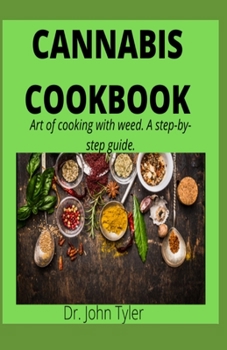Cannabis Cookbook: Art of cooking with weed. A step-by-step guide
Cannabis is a genus of flowering plant within the family Cannabaceae. Cannabis can contain up to 483 known compounds including over 113 known cannabinoids. Our bodies produce cannabinoids endogeously, or internally, called endocannabinoids. These endocannabinoids help to promote general homeostasis. Cannabinoids work by binding directly to cannabinoid receptors within our bodies, the same types of receptors endocannabinoids bind with. At present, there are five recognized cannabinoids produced endogenously throughout the body: Arachidonoylethanolamine (anandamide), 2-arachidonoyl glycerol (2-AG), 2-arachidonyl glyceryl ether (noladin ether), virodhamine, N-arachidonoyl-dopamine (NADA). At least 113 different cannabinoids have been isolated from the Cannabis plant which are also known as phytocannabinoids.Cannabis hasn't always been a controversial substance. In fact, it wasn't until the early twentieth century, around the era of alcohol prohibition, that cannabis was widely perceived as a potentially dangerous substance that needed to be controlled.Cannabis is indigenous to Central Asia and India and it was originally cultivated for use in textiles. It is easy to cultivate, fast-growing plant with strong fibers which made it attractive for rope, paper, and other textiles. When the psychoactive properties of cannabis were discovered isn't clear. However, the plant, especially its seeds, was valued for therapeutic and medicinal uses such as rheumatic pain, intestinal constipation, disorders of the female reproductive system, and malaria in China as early as 2700 BC.It was introduced to the Americas in the 1500s by the Spanish and again, the plant was primarily used for its strong fibers. For example, the U.S.S. Constitution was rigged with more than 120,000 pounds of hemp ropes. The plant's psychoactive properties weren't introduced to the west until the mid-19th century. Irish physician Sir William Brooke O'Shaughnessy was one of the people to introduce the cultivar to Britain.Cannabis went in and out of popularity for the next several decades until the early 1900s when popular opinions formed about the plant vilifying it as an "evil weed." By 1931, 29 states had made cannabis illegal and in 1937, the United States passed the Marijuana Tax Act that made it unaffordable and effectively illegal. In 1970, the Marijuana Tax Act was repealed and in its place possession of marijuana was criminalized by reclassifying it as a Schedule 1 controlled substance along with heroin, LSD, and ecstasy.Now, the legalization of marijuana is being reconsidered around the globe. While it is largely still an illegal substance in most parts of the world, several countries and U.S. states no longer criminalize the possession of marijuana, others allow for its medical use and still, others are legalizing it for recreational use.With changes in marijuana's legal status, there is a growing interest in the substance and its uses. So, we will start with the basics about cannabis, its uses, an overview of growing it, a glimpse of the legal landscape, and some ideas for how it can be used, including a recipe for making Honey Ginger Cannabread.
Format:Paperback
Language:English
ISBN:1658573072
ISBN13:9781658573078
Release Date:January 1
Publisher:Independently Published
Length:108 Pages
Weight:0.30 lbs.
Dimensions:0.2" x 5.5" x 8.5"
Customer Reviews
0 rating





